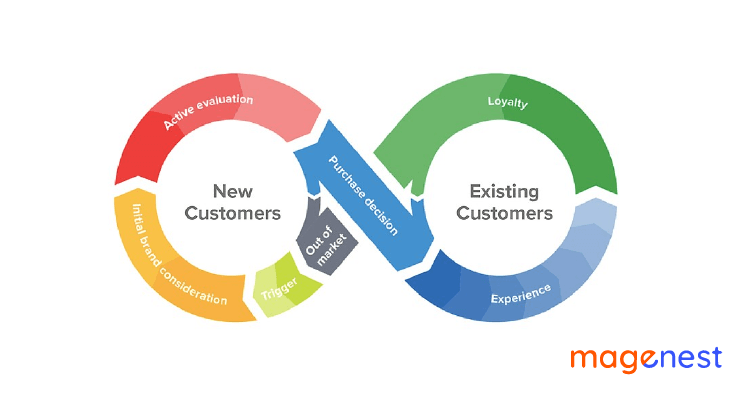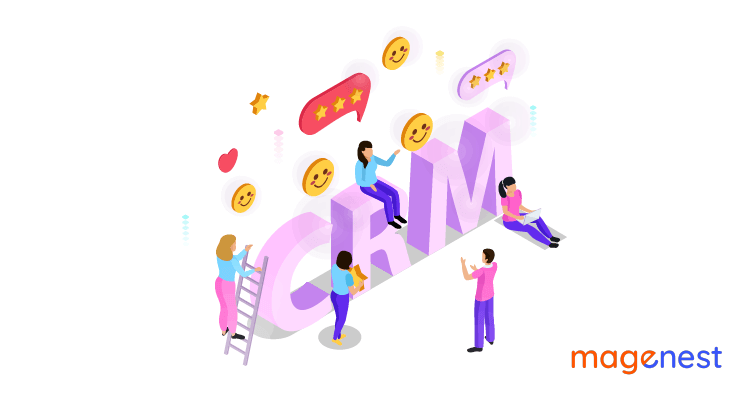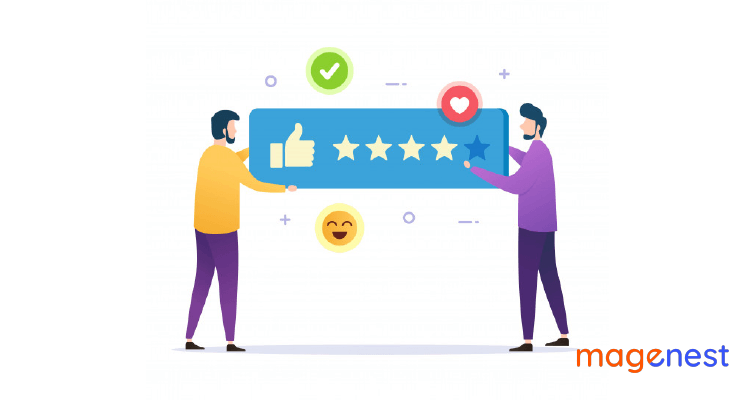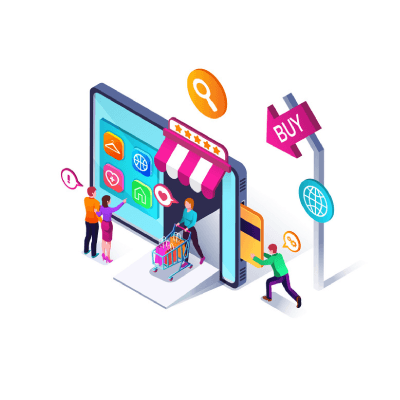As an eCommerce business owner, you have properly heard a lot about customer relationship management. Consumer appeal is apparently a substantial determinant of your success in retail, so it's essential to devote ample time and resources to make sure you're equipped with the proper knowledge and technological arsenal to meet shifting demand.
It's often told that successful businesses have countless loyal customers. But for your business to create brand loyalty among your clients, you must first know your customer life cycle, understand their behaviors and the journey needed to get them to your website.
What is the Customer Life Cycle in CRM?
In regards to Customer Relationship Management, the customer life cycle outlines the various stages a consumer comes through before, during, and after they finish a transaction.
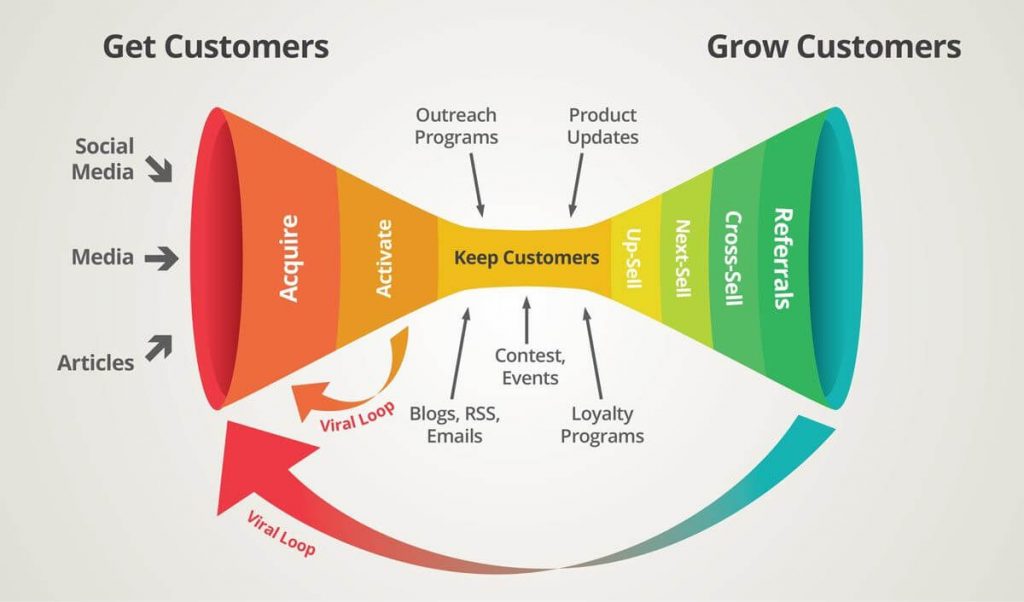
Put the customer life cycle definition another way, it's the journey from Point A to Point B that a customer takes until they make the final purchase. They will move from stages to stages, which makes them become more and more familiar with your services or products. As a result, they may come back for more, and even help you to spread the word of your brand to their family and friends.
The importance of Customer Life Cycle
A thorough understanding of this life cycle is imperative to the growth or success of a business.
As you can see, the importance of the customer life cycle lies in the fact that it's nonlinearity, which means that it ultimately follows a cyclical pattern. Customer retention is the final goal in growing strong brand loyalty, but your business needs to continuously offer proper and up-to-date messaging to former customers, or else your brand's top-of-mind recognition will soon fade away.
The customer life cycle marketing can help your business make the most of the revenue potential for each buyer who makes a purchase on your website. If a customer has turned into a brand advocate, as a result, the possibility for upselling will increase.
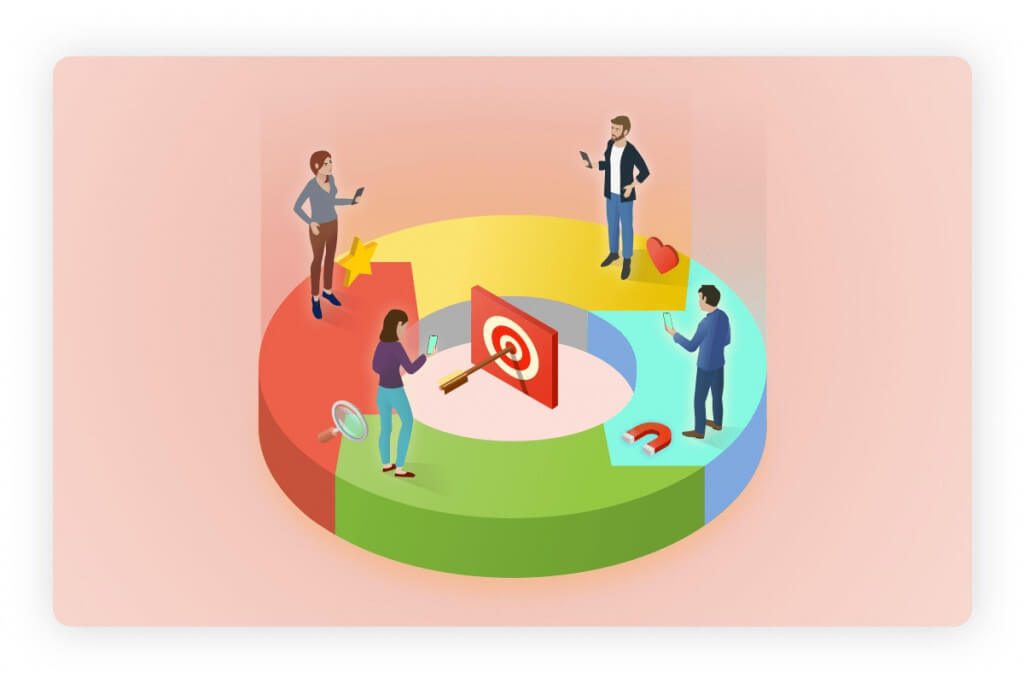
In addition, new product releases, new features, or exclusive offers are also an excellent opportunity to progress consumers across the life cycle. Provided that your messaging is relevant, consistent, and is in tune with customer needs, you can immediately turn one-time buyers into your loyal customers.
What is the Difference Between Customer Life cycle vs. Customer Journey?
Retailers often drop the ball when talking about the customer journey along with the customer life cycle. Here are some key differences:
The customer journey is the sum of total the experiences that a customer may have with your brand, from begin to finish point. This “journey” often contains many touchpoints. Above all, the customer journey is visualized from the viewpoint of the user, generally, in a customer journey map and used by retailers to improve the customer experience.
>>> Read more: What is Customer Journey Management?
On the other hand, the customer life cycle in CRM is a more simplistic model, mostly only encompassing a couple of stages, that classifies customers based on their relationship with your store and envisions the next ideal stage. Understanding the buyer life cycle, retailers can encourage customers to shift from one particular stage to the next, for the sake of boosting all of the sales, revenue, and even referrals.
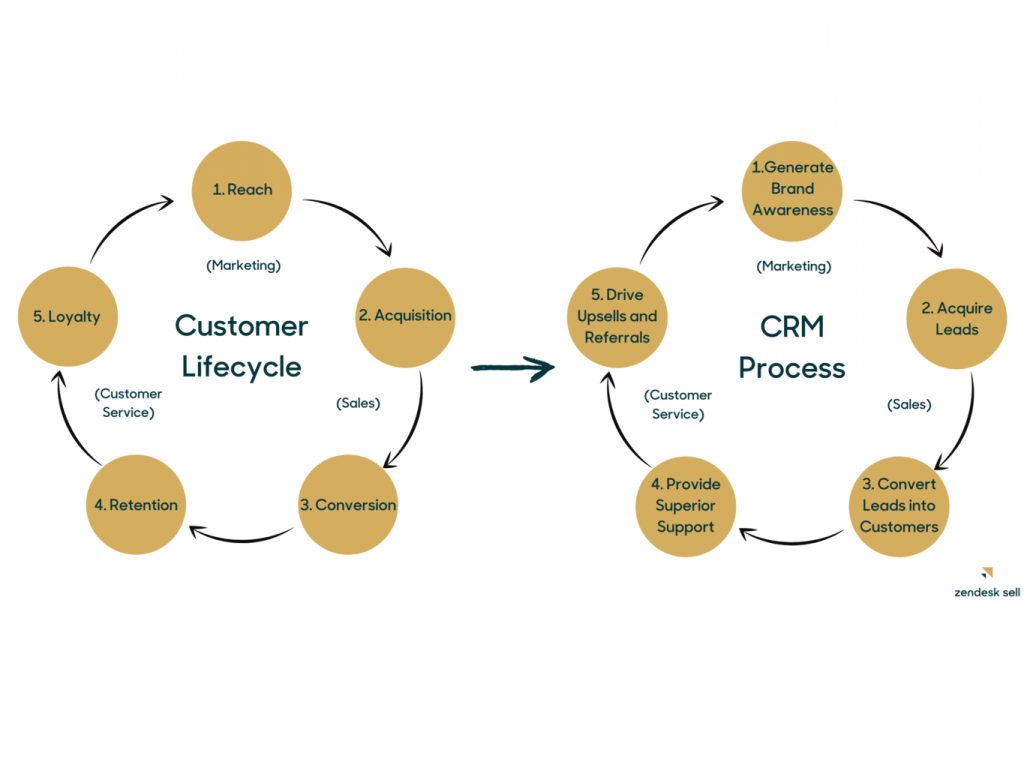
In particular, to explain the customer life cycle, retailers deal with the buyer’s life cycle by targeting customers to convert them from leads into customers, with certain content and experiences. And from customers, they can be turned into repeat customers and even brand advocates rather than strengthen existing experiences, including the existing customer journey.
There may be some overlap between the two terms: customer life cycle vs customer journey, but for all purposes, they should be treated as two distinct concepts.
What are the stages of the Customer Life Cycle?
The customer life cycle stages that a customer passes through during the course of an existing relationship with a brand differ on a case-by-case basis, still, here are five primary customer life cycle phases:
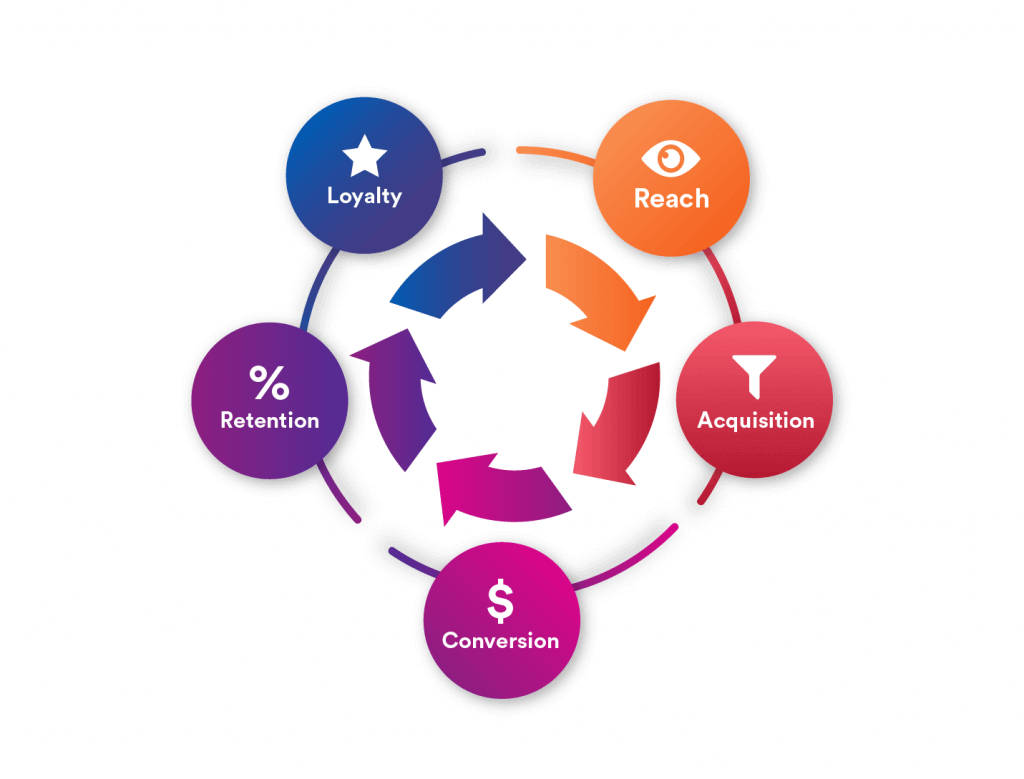
#1 Reach
Your marketing material and content need to be in places where consumers will find it. Reach is the first step in the customer life cycle because it develops awareness right away.
#2 Acquisition
eCommerce customer acquisition is very important. Reaching potential customers doesn't mean much if you can't offer suitable content or messages.
To help with acquisition, you may need to understand your brand, the products or services you offer, and what customer segmentation will buy them. Getting in touch with them directly with individualized communication increases the odds of a prospective conversion.
#3 Conversion
Once that first purchase is paid for, your business needs to stay in touch with the customer. This is when you build up a relationship with the customer, ensuring they're perfectly content with their early transaction.
You can also carry out back-end analytics to foretell what else they may prefer with reference to what they bought the previous time. And because customers like when their opinion is valued, you can ask for feedback to deepen the relationship.
#4 Retention
If you're capable of sending a customer consistent and meaningful messaging, the chances that they return and make further purchases are higher.
Customer retention starts with satisfying a consumer's needs, keeping an eye on them, and cultivating the relationship. If you can take a customer's feedback and use it to improve a product or service, you make them feel as if they were a part of the process.
Performing a customer feedback analysis is important in gaining actionable insights that can give rise to a more intense customer relationship. The generated trust is helpful in the customer life cycle.
#5 Advocacy
Once the retention stage in the customer life cycle stages is reached, you may desire these customers to become your brand advocates. If they are extremely pleased, they likely won't get problems endorsing your products or services to their friends and family.
Once a customer becomes your brand loyal, raising awareness among his or her social circles will be simple, and if they regularly publish positive recommendations, their extensive network is more likely to convert so well.
Final words
The customer life cycle kicks off the moment you first attract a potential customer’s attention. It is often defined as an ellipsis because theoretically, this is a process your customers should move through repeatedly. Managing and sustaining the life cycle is essential for businesses to continue to be competitive in the present-day marketplace.
Understanding the customer life cycle in marketing can help your company maximize revenue for each potential and existing customer.
Yet, the customer life cycle marketing needs to be overseen on the whole and not segmented into silos. For example, if a business centers all of its concentration on the early phases (e.g., reach, acquisition, conversion), but pushes aside the post-purchase steps, it will suffer at the end of the day. Your business may fortunately acquire new customers, but those will soon become unsatisfied and split away, creating customer churn.
Now, it's high time to map out your buyer's life cycle!

-
Thanks for this great information to make us understand difference between customer journey & buyer lifecycle. There are many tools out there that process customer journey lifecycle with great insights about the same


